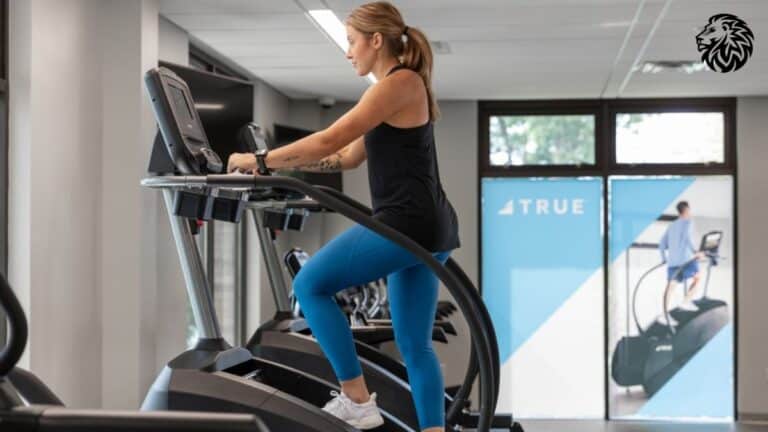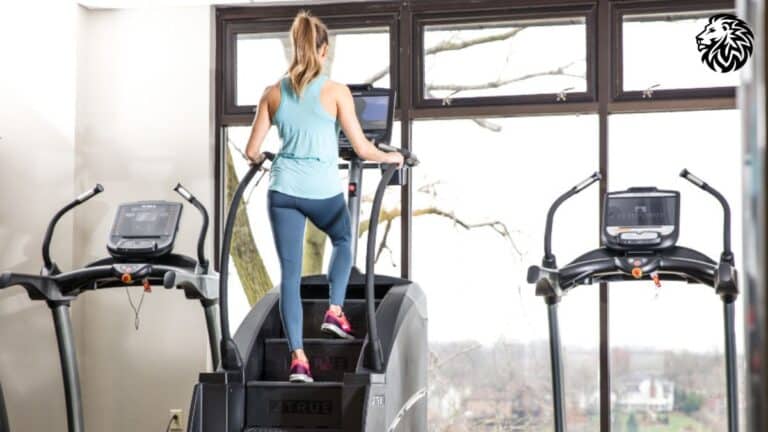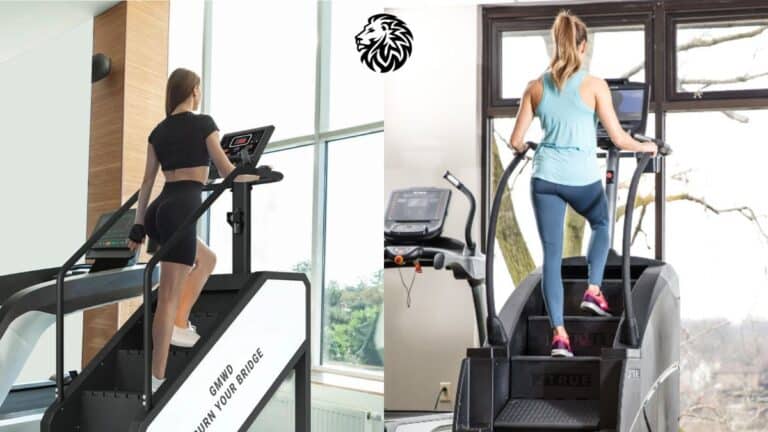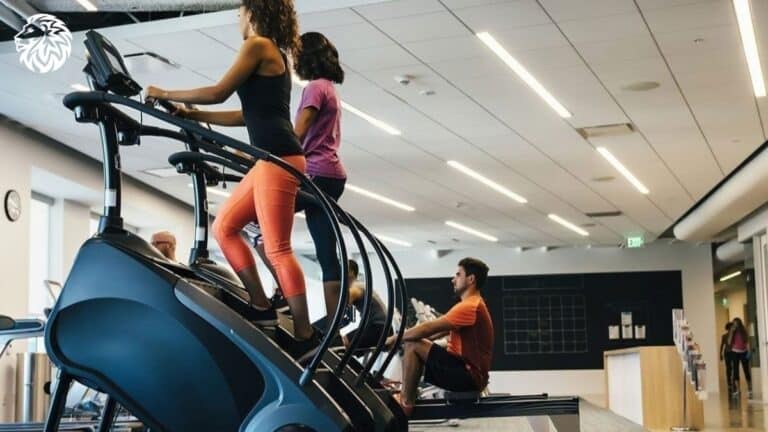Stair climber workouts are a powerhouse in the realm of fitness, offering a multitude of benefits that cater to various fitness goals. This versatile machine, often a staple in gyms, simulates the action of climbing stairs, a simple yet effective exercise.
One of the primary advantages of a stair climber workout is its ability to provide a robust cardiovascular workout. By increasing the heart rate, these workouts improve heart health and endurance. Additionally, they serve as an excellent tool for fat burning and weight management, making them a popular choice for those looking to shed extra pounds.
Beyond cardio, stair climbers are exceptional for strength training, particularly targeting the lower body. Regular use can lead to stronger glutes, hamstrings, quadriceps, and calves. The resistance element of the machine helps in muscle toning and building, which is essential for overall body strength and stability.
Moreover, stair climbing is a low-impact exercise, making it a safer option for individuals with joint concerns. It’s an effective way to build endurance without the harsh impact that activities like running can have on the knees and ankles.
The adaptability of stair climber workouts also makes them appealing for a range of fitness levels. Whether you’re a beginner looking to start a fitness journey or an athlete aiming to enhance performance, the stair climber can be adjusted to meet different intensity and resistance levels.
In summary, stair climber workouts are a comprehensive fitness tool, adept at enhancing cardiovascular health, building strength, and improving endurance. This makes them an ideal choice for anyone looking to achieve a well-rounded fitness routine. As we delve deeper into this article, we’ll explore five innovative ways to maximize the benefits of stair climber workouts, catering to diverse fitness objectives.
Basic Stair Climber Technique
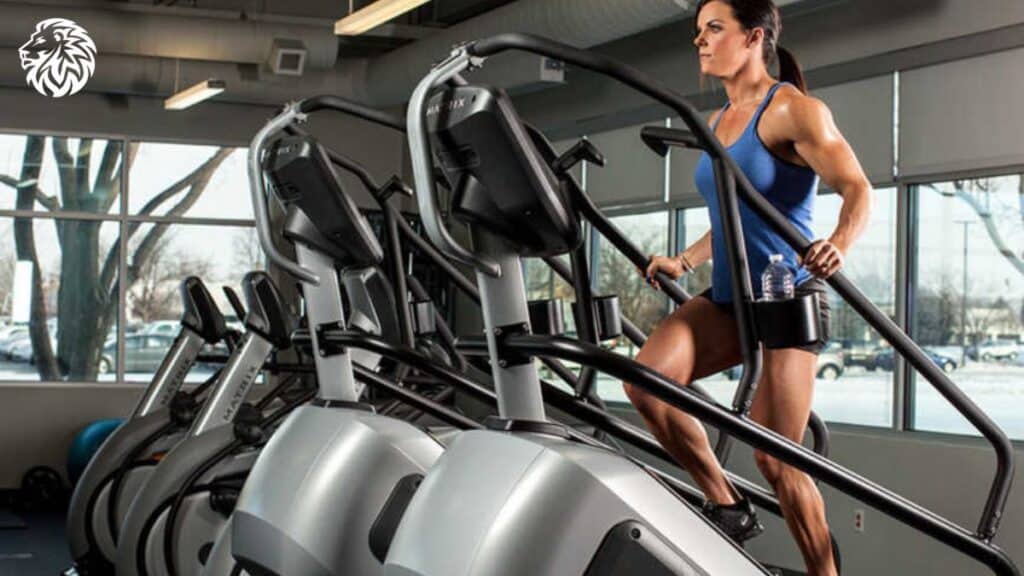
Mastering the basic technique of the stair climber is crucial for maximizing the effectiveness of your workout while minimizing the risk of injury. Proper form and posture play a significant role in ensuring that you get the most out of this exercise machine.
- Maintaining Proper Posture:
- Stand tall on the stair climber, keeping your back straight and core engaged. This alignment helps in supporting your spine and engaging the core muscles.
- Avoid leaning too far forward or holding onto the handrails too tightly, as this can reduce the workout intensity and lead to poor posture.
- Foot Placement:
- Place your entire foot on the step, rather than just the toes. This full-foot contact ensures better balance and activates the correct muscle groups.
- Try to step lightly, avoiding stomping, to engage the leg muscles effectively.
- Engaging the Right Muscle Groups:
- Focus on using your legs to propel your movement up the steps. The glutes, hamstrings, and quads should be the primary muscles at work.
- To engage these muscles more intensely, try not to rely on the handrails for support. Instead, lightly touch them for balance if needed.
- Breathing Technique:
- Maintain a steady breathing pattern. Inhale and exhale smoothly, coordinating your breath with your steps.
- Proper breathing not only helps with endurance but also aids in maintaining a steady rhythm during the workout.
- Keeping Balance:
- Balance is key in stair climber workouts. Keep your gaze forward and body centered over the machine.
- Adjust the speed to a level where you can maintain balance without having to lean on the handrails excessively.
- Pacing Yourself:
- Start at a lower intensity to warm up your muscles, gradually increasing the pace as you get comfortable.
- It’s important to listen to your body and not overexert yourself, especially if you’re new to this form of exercise.
Incorporating these techniques into your stair climber routine will ensure a more effective and safe workout. Not only will proper form help target the right muscle groups, but it will also help in building endurance and strength in a balanced and sustainable way. As you become more comfortable with the basic technique, you can then explore various workout methods to further enhance your stair climbing experience.
5 Ways to Get a Good Stair Climber Workout
Way 1: Interval Training
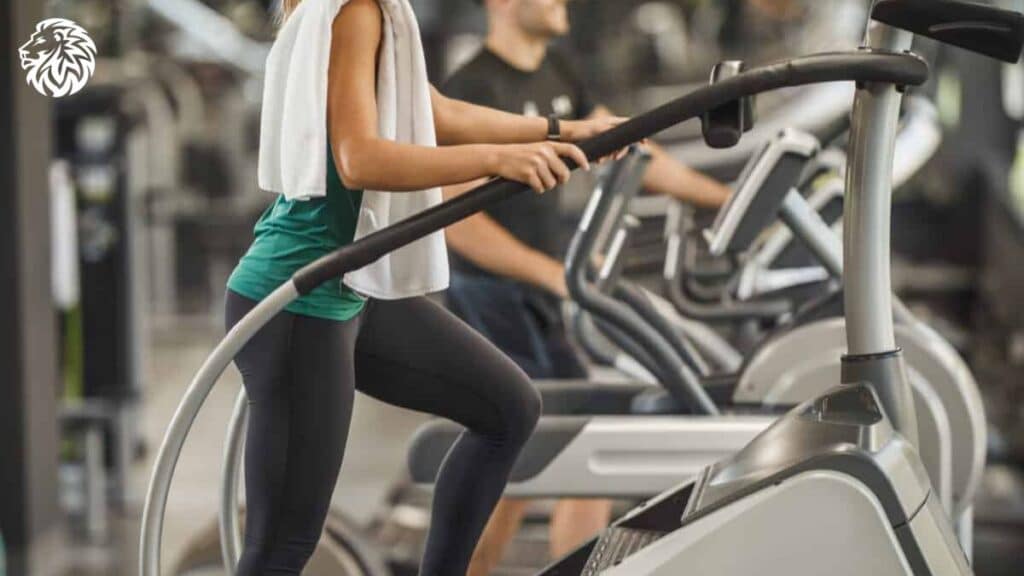
Interval training on a stair climber is a highly effective way to boost cardiovascular fitness and burn calories. This type of workout involves alternating between periods of high intensity and low-intensity exercise, providing a balanced challenge that can improve endurance and strength.
Explanation of Interval Training on a Stair Climber:
- High-Intensity Intervals: These are short bursts where you push yourself to a challenging pace. The goal is to increase your heart rate significantly.
- Low-Intensity Intervals: These periods allow for recovery. You slow down to a more comfortable pace, letting your heart rate decrease.
- Benefits: This approach helps in burning more calories in a shorter time, improving cardiovascular health, and building endurance. It also keeps the workout dynamic and engaging.
Sample Workout Plan:
- Warm-Up (5 minutes): Start with a gentle pace to warm up your muscles and prepare your body for the workout.
- High-Intensity Interval (1 minute): Increase the speed or resistance to a level where you are pushing hard but can maintain for a full minute.
- Low-Intensity Interval (2 minutes): Reduce speed or resistance to a comfortable, steady pace to recover.
- Repeat: Alternate between the high-intensity and low-intensity intervals for 20-30 minutes.
- Cool Down (5 minutes): Gradually slow down to a very gentle pace to cool down.
During the high-intensity intervals, focus on maintaining good form even as you push yourself. It’s crucial to listen to your body and adjust the intensity to a level that is challenging but sustainable. Interval training is adaptable, so you can modify the duration and intensity of the intervals based on your fitness level and goals.
By incorporating interval training into your stair climber routine, you can create a dynamic and effective workout that not only boosts your cardiovascular health but also keeps you engaged and motivated.
Way 2: Endurance Building
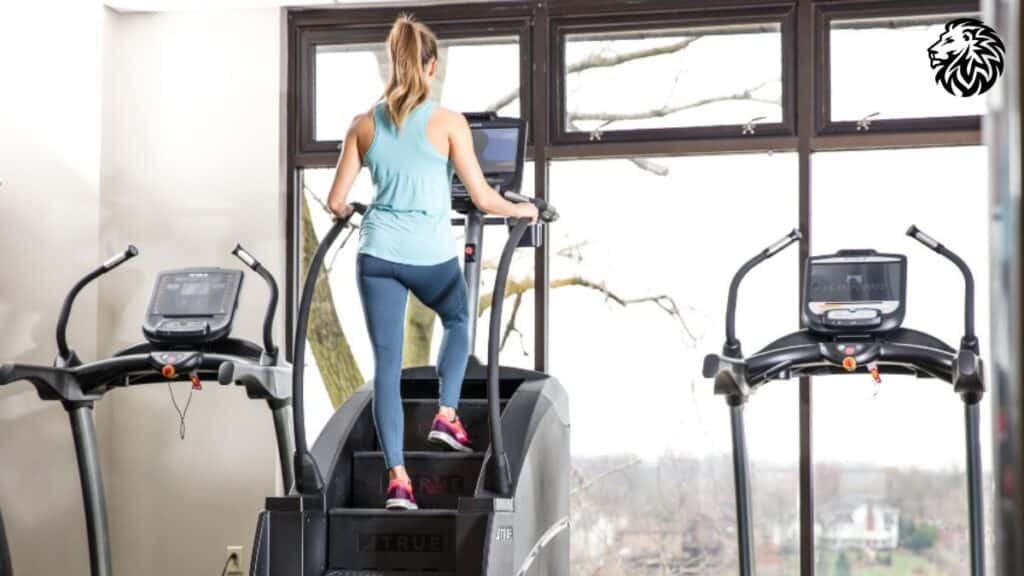
Using a stair climber for endurance building is a strategic way to enhance your stamina and overall fitness. Endurance workouts focus on maintaining a consistent effort over a longer duration, which can significantly improve cardiovascular health and muscular endurance.
Strategies for Using the Stair Climber to Increase Endurance:
- Consistent Pace: Maintain a steady, moderate pace throughout the workout. This consistency is key in building endurance.
- Gradual Increase in Duration: Start with a manageable duration and gradually increase the time spent on the stair climber as your endurance improves.
- Mindful Breathing: Focus on your breathing, ensuring it is steady and deep. Proper breathing can greatly impact your ability to maintain a consistent pace.
- Regular Hydration: Stay hydrated during the workout, especially since endurance sessions can be lengthy.
- Listen to Your Body: Pay attention to how your body feels. Endurance training is about pushing limits but also about understanding and respecting your body’s signals.
Suggested Long-Duration Workout with a Moderate, Steady Pace:
- Warm-Up (5-10 minutes): Begin with a slow pace to prepare your body for the extended workout.
- Main Workout (30-60 minutes): Set the stair climber at a moderate pace that you can maintain for the entire duration. The intensity should be challenging but not overwhelming.
- Mid-Session Check-In: Halfway through the workout, check in with your posture, breathing, and hydration. Make adjustments if needed.
- Cool Down (5-10 minutes): Gradually reduce the pace to a slow, comfortable level to cool down your muscles.
This type of workout not only improves cardiovascular endurance but also strengthens the muscles in your lower body, enhancing overall stamina and resilience. It’s important to start at a level that suits your current fitness and gradually increase the duration as your endurance builds. Incorporating endurance workouts on the stair climber can be a game-changer in your fitness routine, offering a steady and effective path to improved stamina and health.
Way 3: Strength Training
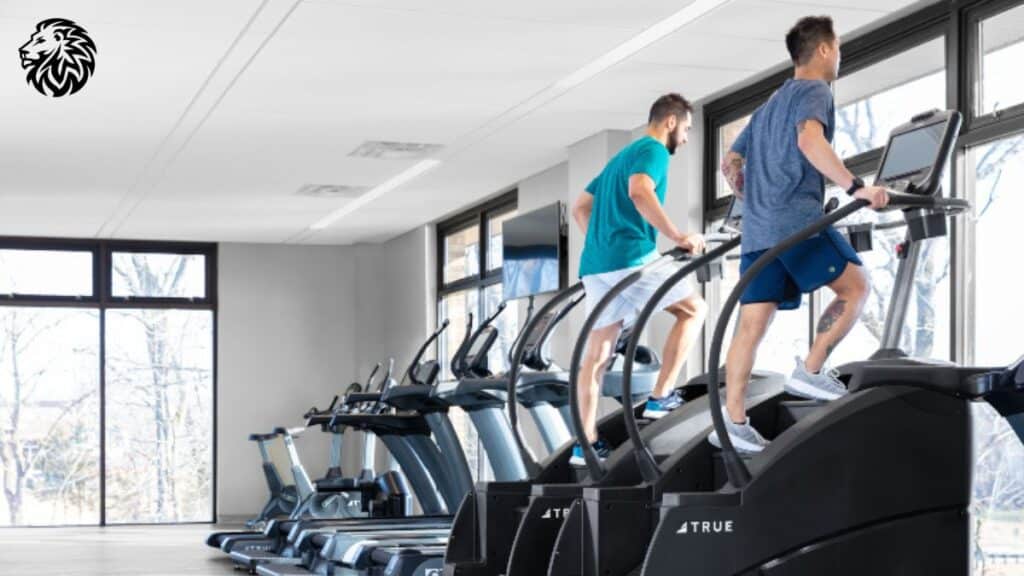
Integrating strength training elements into your stair climber workout can significantly enhance muscle building and overall body strength. By combining cardio with strength-focused exercises, you create a more holistic fitness routine.
Incorporating Strength Elements on a Stair Climber:
- Using Resistance Bands: Attach resistance bands to the stair climber or your body to add extra resistance to your steps. This added resistance helps in engaging more muscle groups.
- Performing Squats: Integrate squats into your stair climbing routine. Every few steps, pause and perform a squat, ensuring proper form.
- Incorporating Weighted Vests: Wearing a weighted vest can increase the intensity of the workout, thereby strengthening the lower body muscles more effectively.
- Step Variations: Experiment with different step techniques like sidestepping or skipping steps to engage different muscle groups.
Examples of Exercises and Routines for Muscle Building:
- Routine with Resistance Bands:
- Warm-Up: 5 minutes of light stepping.
- Main Workout: Attach resistance bands to the machine or your ankles. Climb for 2 minutes with bands, focusing on the tension in your legs.
- Rest: 1 minute of slow stepping or a complete stop.
- Repeat: Perform 5-10 cycles depending on fitness level.
- Squat and Climb Routine:
- Warm-Up: 5 minutes of regular stepping.
- Main Workout: After every 10 steps, perform 3-5 squats. Ensure proper squat form.
- Continue for 20-30 minutes, alternating between stepping and squats.
- Cool Down: 5 minutes of gentle stepping.
- Sidestepping for Glute Activation:
- Warm-Up: 5 minutes of forward stepping.
- Main Workout: Turn to your side and step for 2 minutes. Switch sides.
- Repeat: Alternate sides for 20-30 minutes, focusing on engaging your glutes.
- Cool Down: 5 minutes of gentle forward stepping.
By incorporating these strength-focused elements into your stair climber routine, you can effectively work on building muscle while still reaping the cardiovascular benefits of the machine. It’s important to maintain proper form and balance during these exercises to prevent injury and ensure maximum efficiency. This multifaceted approach to stair climber workouts can lead to improved strength, better muscle tone, and a more varied exercise regimen.
Way 4: Speed Challenges
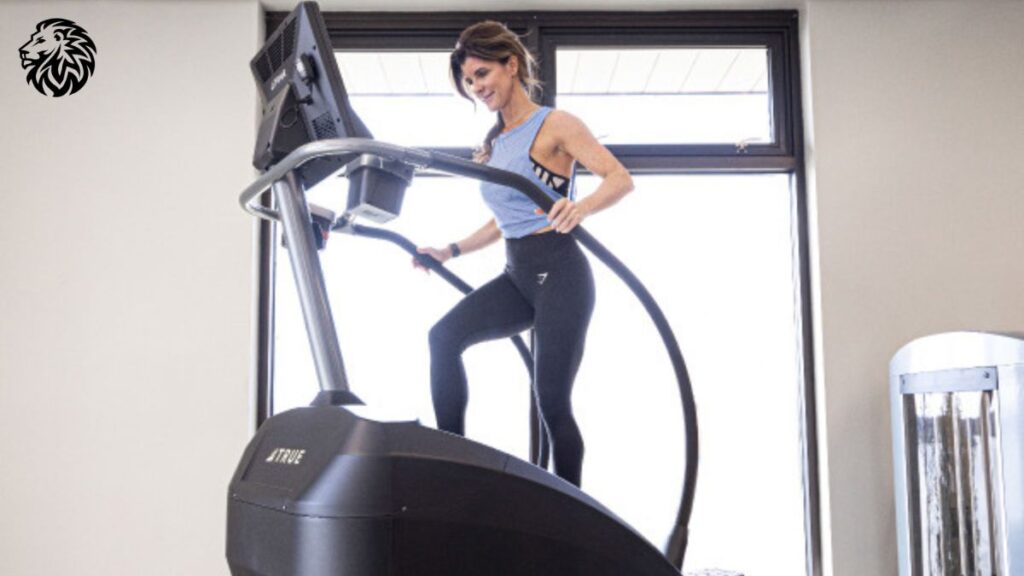
Speed challenges on the stair climber can greatly enhance cardiovascular health by pushing the heart rate into higher zones for short periods. These fast-paced workouts are not only excellent for improving cardio fitness but also for boosting metabolism and calorie burning.
Encouraging Fast-Paced Workouts:
- Short, High-Speed Intervals: Incorporate short intervals of high-speed climbing into your routine. These bursts should be intense and push your limits.
- Gradual Speed Increase: Start at a comfortable pace and gradually increase to a high-speed interval, ensuring you’re warmed up and ready.
- Active Recovery: After a high-speed burst, slow down to a moderate or light pace to recover, but don’t stop moving. This keeps the heart rate elevated.
Guideline for Creating a Speed-Focused Workout Routine:
- Warm-Up (5 minutes): Start with a slow to moderate pace to prepare your body.
- Speed Interval (1-2 minutes): Increase the speed to a challenging but sustainable level. Push yourself to maintain this pace for the duration of the interval.
- Recovery Interval (2-3 minutes): Reduce the speed to a moderate or light pace. Use this time to catch your breath and prepare for the next burst.
- Repeat: Alternate between speed and recovery intervals for 20-30 minutes, depending on your fitness level.
- Cool Down (5 minutes): Gradually reduce the speed to a gentle pace to cool down your muscles.
Additional Tips:
- Monitor Your Form: Even at high speeds, maintain good posture and proper foot placement.
- Stay Hydrated: Keep water nearby and stay hydrated, especially since these workouts can be intense.
- Listen to Your Body: If you feel dizzy or excessively fatigued, slow down. It’s important to challenge yourself, but not to the point of risking injury or health.
Speed challenges on the stair climber offer a dynamic and intense way to improve cardiovascular health. They bring variety to your workout routine, making it more engaging and effective. Regularly including speed-focused workouts can lead to significant improvements in your overall fitness and endurance.
Way 5: Incorporating Upper Body Movements
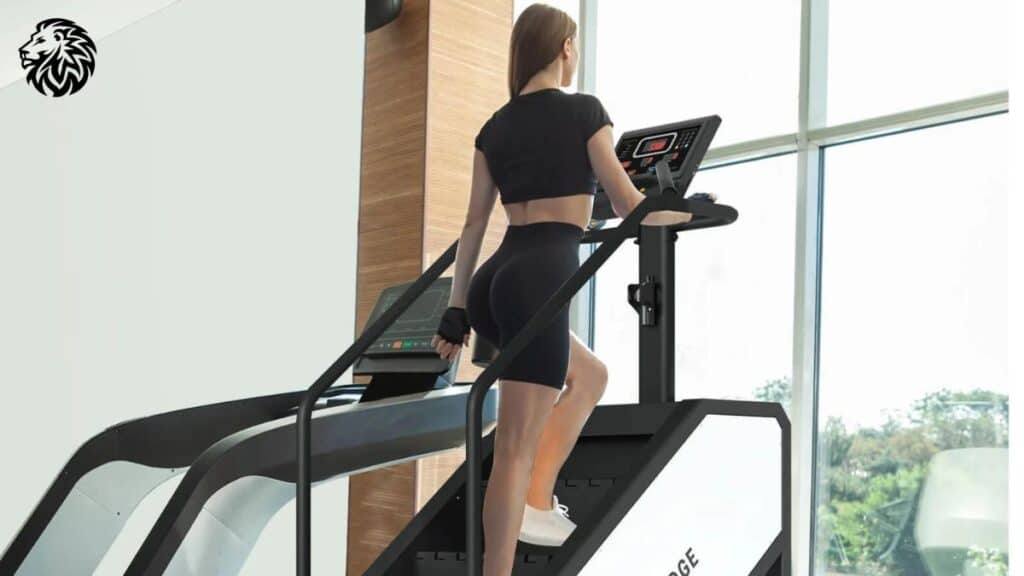
Engaging the upper body during stair climber workouts can transform a lower-body exercise into a full-body workout. By incorporating upper body movements, you can increase overall calorie burn and muscle engagement.
Techniques for Engaging the Upper Body:
- Use of Hand Weights: Holding light dumbbells or hand weights while stepping can add an extra challenge. Perform arm exercises like bicep curls, shoulder presses, or lateral raises as you step.
- Arm Pumping: Vigorously pump your arms as you step, similar to the motion you would use while running. This not only engages your arms but also adds intensity to your cardio workout.
- Using Resistance Bands: Attach resistance bands to a stationary object and hold the ends while climbing. Pull the bands with each step, working your arms and back.
Examples of Arm Exercises and Routines:
- Routine with Hand Weights:
- Warm-Up: 5 minutes of light stepping without weights.
- Main Workout: Hold light weights (1-5 pounds). Alternate between 1 minute of stepping and 1 minute of arm exercises (bicep curls, tricep extensions, shoulder presses).
- Duration: Continue for 20-30 minutes.
- Cool Down: 5 minutes of gentle stepping, putting the weights down.
- Arm Pumping Routine:
- Warm-Up: 5 minutes of light stepping.
- Main Workout: Step at a moderate pace and vigorously pump your arms. Focus on using your arm muscles rather than just swinging them.
- Duration: Continue for 20-30 minutes, maintaining consistent arm movement.
- Cool Down: 5 minutes of slow stepping with relaxed arms.
- Resistance Band Workout:
- Setup: Attach resistance bands at waist height.
- Warm-Up: 5 minutes of light stepping without bands.
- Main Workout: Hold the ends of the bands and step. With each step, pull the bands by bending your elbows and squeezing your shoulder blades together.
- Duration: Continue for 20-30 minutes, alternating between band pulling and regular stepping.
- Cool Down: 5 minutes of gentle stepping without the bands.
Incorporating these upper body movements not only diversifies your workout but also ensures a balanced approach to fitness, targeting multiple muscle groups simultaneously. This holistic approach can lead to improved overall strength, better posture, and a more effective calorie-burning session.
Safety Tips and Considerations
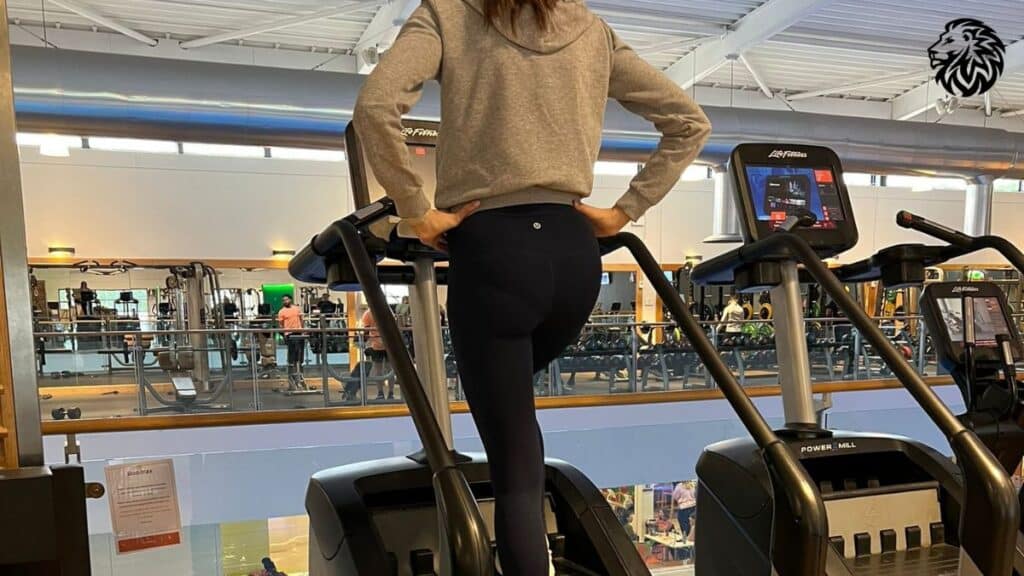
Ensuring safety while using a stair climber is essential to prevent injuries and make the most out of your workouts. Here are some important tips and considerations:
Advice on Avoiding Common Injuries:
- Proper Footwear: Wear supportive, well-fitting athletic shoes to provide stability and cushioning.
- Correct Posture: Keep your back straight and avoid leaning too far forward. Poor posture can lead to back strain.
- Avoid Over-Gripping: Lightly hold the handrails if necessary, but avoid gripping them tightly as this can cause shoulder and wrist strain.
- Listen to Your Body: Don’t ignore pain or discomfort. If you feel any unusual pain, especially in your knees or lower back, reduce the intensity or stop your workout.
Warm-Up Recommendations:
- A proper warm-up increases your heart rate and prepares your muscles for exercise, reducing the risk of injury.
- Spend at least 5-10 minutes doing light stepping on the stair climber.
- Incorporate dynamic stretches like leg swings or lunges to loosen up your leg muscles.
Cool-Down Recommendations:
- Cooling down helps your body transition back to a resting state and can prevent muscle stiffness.
- Gradually decrease the pace on the stair climber over 5-10 minutes until your heart rate returns to near resting levels.
- Finish with static stretches targeting the lower body, such as calf stretches, hamstring stretches, and quadriceps stretches. Hold each stretch for about 20-30 seconds for optimal benefit.
Hydration and Nutrition:
- Stay hydrated before, during, and after your workout. Dehydration can increase the risk of muscle cramps and fatigue.
- Consider a balanced snack or meal post-workout to replenish energy stores and aid muscle recovery.
By following these safety tips and considerations, you can enjoy a productive and injury-free experience on the stair climber. Remember, the key is to start slow, especially if you’re new to this type of exercise, and gradually increase the intensity as your fitness improves.
Conclusion
Stair climber workouts offer a versatile and effective way to enhance your fitness journey. By exploring the various methods outlined in this article, you can reap a wide range of benefits that this machine has to offer.
Recap of the Benefits:
- Cardiovascular Health: Regular use of the stair climber improves heart health and endurance.
- Strength Building: Targeted exercises and resistance work strengthen the lower body and can also engage the upper body.
- Endurance Enhancement: Prolonged, steady workouts increase stamina and overall fitness levels.
- Calorie Burning: These workouts are excellent for weight management and fat burning.
- Flexibility and Adaptability: The stair climber caters to different fitness levels and goals, from interval training to strength-focused routines.
The diversity of workouts possible on a stair climber ensures that your exercise routine remains engaging and challenging. Whether you’re aiming for intense cardio, strength building, endurance enhancement, or a combination, the stair climber can be adjusted to meet your needs.
Encouragement for Varied Workouts:
- Avoid Monotony: Mixing up your routine with different workout styles not only keeps things interesting but also challenges different muscle groups and aspects of fitness.
- Personalization: Adapt the workouts to suit your personal fitness level and goals. There’s room for customization and progression as you get stronger and more confident.
- Consistency and Patience: Like any fitness regimen, consistent effort and patience are key to seeing results. Enjoy the process and celebrate your progress.
In conclusion, the stair climber is more than just a cardio machine; it’s a multifaceted tool for achieving a wide range of fitness goals. By incorporating different workout styles and keeping your routine varied, you can stay motivated and continuously challenge yourself. Whether you’re a beginner or an experienced fitness enthusiast, the stair climber can be a valuable addition to your exercise regimen.

